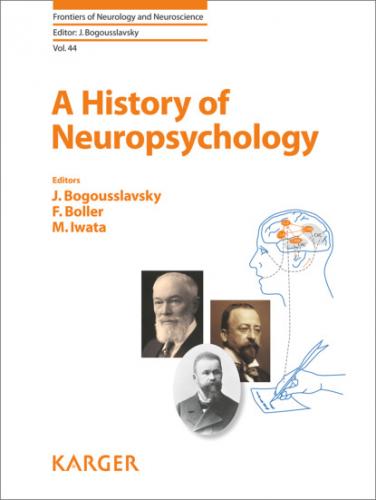Fig. 2. Charcot’s diagram of cortical centers for oral and written language, prepared by Marie in 1888 [30]. CAM, auditory word center. CLA, motor center for articulate language; CLE, motor center for written language; CVM, visual word center; CVC, common visual center; CAC, common auditory center. Original image modified by V.W. Henderson.
Charcot’s student Albert Pitres (1848–1928) in Bordeaux provided the first detailed description of isolated agraphia [32]. Like Charcot, he accepted that the posterior part of the left second frontal convolution (Exner’s area) played a role in graphic memory similar to the role of the posterior part of the third frontal convolution (Broca’s area) in phonetic memory. Pitres described a patient with “pure motor agraphia” affecting the right hand. He had developed aphasia 18 months before, but speech, speech understanding, reading, and spelling aloud were normal when Pitres examined him. He wrote legibly with his left hand. With his right hand, he wrote neither words nor letters, but he easily drew geometric figures. He could copy printed text with his right hand, albeit, as if copying a design; he could not copy cursive text. Pitres interpreted the problem as the written counterpart of motor aphasia (Broca’s aphasia); that is, the loss of memory for movements needed to guide the right hand in writing.
Alexia with and without Agraphia
Jules Dejerine (1849–1917) is linked to syndromes of alexia with agraphia and alexia without agraphia. His seminal work occurred at the Bicêtre hospital in Paris, and later he became the third person to hold the chair in Clinical Diseases of the Nervous System at the Salpêtrière hospital.
Dejerine, like Charcot and others, recognized alexia and agraphia as distinct and dissociable manifestations of aphasia. However, he rejected the existence of a separate specialized writing center near Broca’s area. Agraphia was a feature of damage that caused motor (Broca’s) or sensory (Wernicke’s) aphasia. In addition, reading and writing were selectively impaired by injury to the left angular gyrus [33].
In 1891 and 1892, Dejerine published 2 highly influential case reports in which he provided the anatomical and theoretical basis for word blindness (alexia) with agraphia and word blindness without agraphia [34, 35]. Dejerine’s first case was a 63-year-old man who suddenly discovered that he could not read his morning newspaper [34]. In contrast to relatively preserved spoken language, he could not read or write (p 198; translation from [3]):
When one gives him a newspaper or a written phrase, he looks at the newspaper or the paper for a moment, then faces the examiner, stating, “I do not understand.” The same for letters of the alphabet, which he could scarcely name.… When one tells the patient to write, he holds the pen or pencil quite awkwardly … and if sometimes he wishes to write spontaneously, to dictation or copy, he always writes [only] his name. [34].
Autopsy 10 months later revealed a small area of cortical softening that involved the left angular gyrus, extending inward from the surface [34] (Fig. 3a). Dejerine inferred that alexia and agraphia were caused by the angular gyrus softening, which resulted in the “loss of optical images of letters” (p 200) [34].
Fig. 3. Horizontal sections through the left cerebral hemisphere, which depict softenings caused by stroke affecting angular gyrus cortex and subcortical white matter (thin arrows) in Dejerine’s patient with word blindness (alexia) with agraphia [34] (a, top) and with word blindness without agraphia followed by word blindness with agraphia [35] (b, bottom). The thick arrow in b indicates the occipital lobe site of the first stroke. Original images modified by V.W. Henderson.
The following year, Dejerine established the theoretical basis for pure word blindness. He described the remarkable case of a 68-year-old man who had 2 strokes. The first caused pure word blindness and the second caused word blindness with agraphia [35]. According to Dejerine, the critical lesion of pure word blindness isolated the left angular gyrus from visual input, required for letters and words to be perceived as linguistic symbols. After the first stroke, Dejerine’s examination revealed no weakness or sensory loss. Speech was normal and writing nearly so, except that the patient wrote as if he were copying a drawing. He could not read (Fig. 4a–c; pp 67–69; translation from [3]):
Fig. 4. Writing samples from Dejerine’s 1892 patient after his first (a–c) and second (d) stroke [35]. a Spontaneous writing. b Writing to dictation. c1 and c2Model text (c1) and patient’s copy (c2). d Illegible writing after second stroke. Original image modified by V.W. Henderson.
His spoken language is very correct, even carefully selected; he always uses appropriate terms and shows no trace of paraphasia. … The patient understands perfectly all that one says to him. … Writing spontaneously and to dictation is perfectly preserved. … Spontaneously, the patient writes as well as he speaks. In comparing the many writing specimens that I had him write, one notices no mistakes, no spelling error, no transposition of letters. … Writing to dictation is executed equally easily and fluently, but reading what the patient has written is absolutely impossible. Here it is indeed a question of a case of absolutely pure word blindness. The patient recognizes not a letter, not a word except, however, his name.” [35].
The second stroke caused slurred speech and right-sided weakness. Although he soon regained his strength, his speech contained naming errors, and he could not write (Fig. 4d). He died soon after the second stroke, and the autopsy showed 2 lesions (Fig. 3b). Dejerine summarized the case as follows (pp 83–84; translation from [3]):
During the first phase, which lasted 4 years, the patient presented the purest clinical picture that one can imagine of … pure word blindness without any alteration in spontaneous writing or [writing] to dictation. During the second phase, which lasted only 10 days, complete agraphia with paraphasia came to complicate word blindness. In this second phase, the clinical picture then corresponded to … word blindness with marked alteration of writing.
